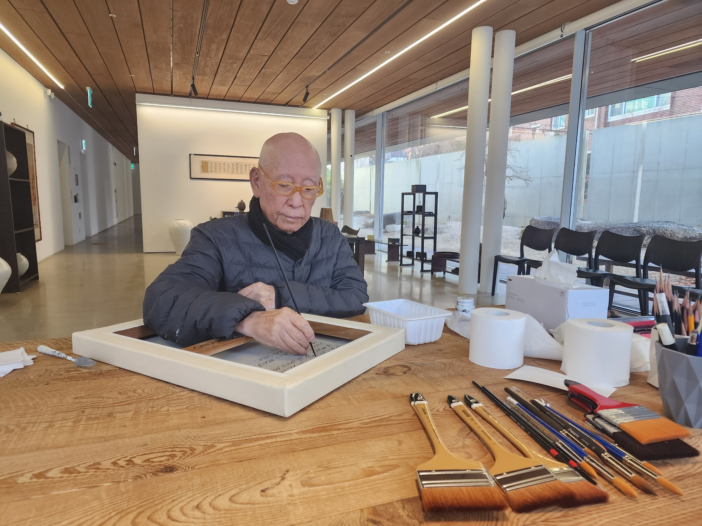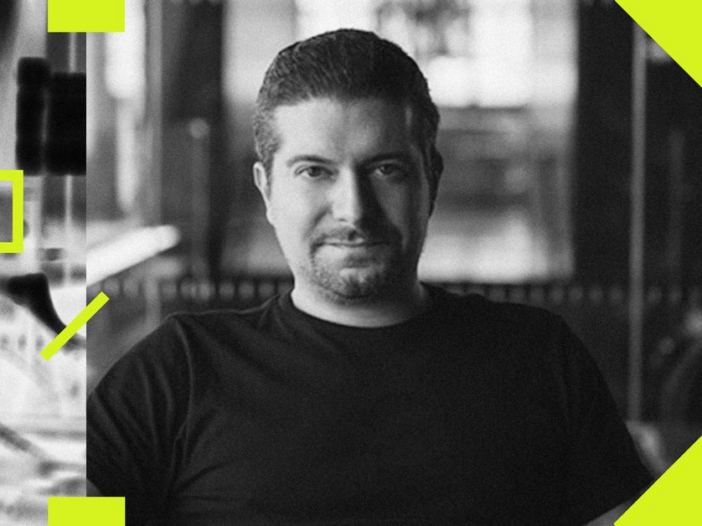Join us in analyzing 3 case studies that show the importance of driving brand search behavior and engagement, and how to do it in months, instead of years.
Maximize your SEO efforts in 2024 with insights on Google’s SGE, algorithm updates, and expert tips to keep your site ahead.
Download this guide and learn how to optimize and manage Google Performance Max campaigns, with expert insights and actionable strategies to ensure your campaigns are effective.
Join us in analyzing 3 case studies that show the importance of driving brand search behavior and engagement, and how to do it in months, instead of years.
Join us in analyzing 3 case studies that show the importance of driving brand search behavior and engagement, and how to do it in months, instead of years.
Join us as we dive into exclusive survey data from industry-leading SEOs, digital marketers, content marketers, and more to highlight the top priorities and challenges that will shape the future of search in 2025.
Unlock the power of AI in SEO with Ahrefs. Automate your content and SEO workflows to save time and boost your strategies.
This post was sponsored by Ahrefs. The opinions expressed in this article are the sponsor’s own.
Having the right SEO AI tools in your martech stack can help you:
At Ahrefs, we’ve been hard at work releasing AI features that will give you a competitive edge you can’t get anywhere else.
Check out how to automate your content and SEO workflows with Ahrefs’ AI capabilities.
When doing keyword research, it’s a fairly common practice to start by searching for your main topic, product, or service.
For instance, if you’re in the gardening niche, you and your competitors will likely compete quite heavily on keywords containing the word “gardening.”
To find untapped opportunities, you can try out the AI keyword suggestions in Ahrefs’ Keywords Explorer.
You can either select an existing preset or add your own prompt:
With either option, this tool’s benefit is generating a list of unique content ideas your competitors have likely not considered.
For example, check out the technical and specialized keyword ideas related to “gardening”:
You can run with all of these ideas or cherry-pick the best ones for your site. It helps to search each in isolation to get a better feel for how easy the topic may be for your site to rank.
For example, looking at “xeriscaping” we can see this topic has a decent search volume of 7.5K searches per month and only 8 difficulty!
This is a great example of a niche topic with low competition levels.
Uncovering more opportunities like this is a great place for niche bloggers and small businesses to start building an audience on a low budget. It’s also great for freelancers and agencies to pitch unique content angles to clients or prospects quickly and easily.
PRO TIP: For topics with loads of related keywords, you can use the clustering feature to group keywords into potential pages.
It’s often likely that one page you create will be able to rank for most keywords in a cluster, so you can further fast-track your content planning this way.
Keyword intent, also called searcher intent, is the reason why someone searches for a particular term. It’s the unconscious motivation that drives their search journey and influences what content they expect to find.
Common intents that search marketers group keywords into include:
Verifying the intent of your target keywords before you start writing content is always a good idea so that you can match the content you create to what searchers want.
In Ahrefs, you can easily filter your keyword list by the above intents and other common scenarios like branded or localized mentions:
However, on their own, these classifications may not be enough to indicate exactly what type of content you should create.
For example, the intent behind the keyword “backlink checker” does not neatly fit into one of the above classifications.
Using the AI Identify Intents feature instead, you can get a more granular indication of exactly what type of content is ranking for each keyword.
In this case, it’s pretty obvious that people want a tool to use. So, the best page to optimize should include a backlink checker tool on it.
But looking at a keyword like “laser cutter”, it’s not as obvious what the dominant intent is or what type of content would perform well.
This same feature can give you a percentage breakdown to completely take the guesswork out of what type of content is likely to rank:
For instance, here’s the keyword intent breakdown based on content that ranks on the first page of Google results:
If you guess and get it wrong, you’ll have to allocate your limited SEO funds toward fixing the mistake (ie, rewriting your content) instead of working on new tasks.
It’s better to have data on your side confirming the intent of any keyword before you publish content with an intent misalignment.
Now that you have some topics to create content about and you’ve verified they align with the search intent you can fulfill, it’s time to create your content.
There are so many AI tools on the market that can help with content creation. Here’s how Ahrefs’ AI Content Helper stands out from the crowd.
For example, say you wanted to create content to target the keyword “xeriscaping”. You could select a specific intent to optimize for:
Or you could choose specific competitors you’d like to outrank:
Then, as you start writing, you can check your progress against all relevant topics and competitors that match the intent you’re optimizing for:
If you have existing content you’d like to improve, you can check out AI Content Grader instead.
Add your target keyword and existing URL:
Once the report is generated, you’ll get a comparison view of your article with your top competitors.
You’ll be able to see the grade for each topic and how you compare against each competitor. You’ll also get some practical AI suggestions for how to further improve your topical coverage.
This is a great way for your writers to know what sections they can add to existing content, allowing them to confidently close topical gaps without having to rewrite each post from scratch.
If you’re targeting international or multilingual audiences with your SEO strategy, Ahrefs’ AI Keyword Translator is a must-have tool in your tech stack.
Streamlining such a task by using Ahrefs allows you to:
It lets you translate an entire list of keywords automatically while preserving dialect nuances and local lingo.
For example, there are over a dozen ways to say ‘popcorn’ across all Spanish-speaking countries and dialects.
The AI translator is able to detect the most popular variation in each country.
It currently offers automatic translations for 40+ languages and dialects in 180+ countries, with more coming soon.
One of our most exciting upcoming features that will integrate AI is Patches.
Patches allows you to fix simple technical issues on your website with one click, and without involving a developer. It works through Cloudflare workers or JavaScript snippets.
<embed>
Soon in Ahrefs: Patches
This feature will allow you to use AI to implement quick and easy fixes to maintain your content’s technical health over time.
The edits you make can be at a page level and implemented by non-technical team members.
For instance, say you have a list of pages flagged with titles that are missing, too short, or too long. Your content team will be able to use AI to correct these issues and deploy them to your website directly from the Ahrefs dashboard.
Your SEO or development teams will also be able to roll out sitewide technical fixes in similar ways.
SEO and content marketing can’t be automated to perfection; no AI tool can promise that.
But there are many AI use cases that speed up and improve what you’re already doing. AI can make your marketing dollar go further by saving time on busy work and removing the guesswork from your SEO strategy.
If you’re new to Ahrefs, you can try our platform for free with Ahrefs Webmaster Tools.
We also offer a low-cost Starter plan for anyone interested in going beyond the free version and taking their keyword and competitive research further.
Image Credits
Featured Image: Image by Ahrefs. Used with permission.
In-Post Image: Images by Ahrefs. Used with permission.
SEO and marketing tools, powered by seriously big data
Conquer your day with daily search marketing news.
Join Our Newsletter.
Get your daily dose of search know-how.
In a world ruled by algorithms, SEJ brings timely, relevant information for SEOs, marketers, and entrepreneurs to optimize and grow their businesses — and careers.
Copyright © 2024 Search Engine Journal. All rights reserved. Published by Alpha Brand Media.
Google Search Reliability
Search Off the Record takes you behind the scenes of Google Search and its inner workings! In each episode, the folks from the Search Relations team will give you background info on the decision-making behind launches, feature prioritization in Search Console, and the projects Google Search teams are working on. They will share fun stories from the many conferences they attend as well as from their day-to-day working life at Google. They will also dive into the currently trending conversations in the SEO community at large. Have a listen!
#349 – How To Make $10,000+ From Other People’s Audiences
Check out Bryan’s free resource containing all the tools needed to add $10k coaching clients using other people’s audiences 🔥👇
https://ahkr.to/growthtools-free-tool-swipe
____________________________________________
Today, we dive deep into how to make millions online by helping people solve real problems without getting distracted by shiny objects.
Our guest, Bryan Harris, built Growth Tools from scratch into an 7-figure business by focusing obsessively on two things: high-ticket coaching and borrowing other people's audiences.
What's fascinating is that Bryan gives away all his tools and training for free and still has a 50% success rate when pitching partnerships.
In this episode, you'll learn: 👉 his brilliant five-question sales framework that converts at 10% 👉 how he structures his coaching programme to make it impossible to fail 👉 the precise steps he takes to build a 7-figure business from scratch in just 12 months
Even if you never plan to offer coaching, Brian's insights about solving real problems and borrowing audiences will change how you think about growing your business.
So whether you're just starting out or looking to add a high-ticket offer to your existing business, this episode is packed with actionable goals you can implement right away.
____________________________________________
Host: Mark Webster
Guest: Bryan Harris
Full show notes:
https://www.authorityhacker.com/podcasts/349-how-to-make-10k-from-other-peoples-audiences/
____________________________________________
A special thanks to our sponsors for this episode, Digital PR Agency, Search Intelligence.
https://search-intelligence.co.uk/
____________________________________________
Looking for 100s of more episodes like these?
Check out our main YouTube channel: https://www.youtube.com/c/AuthorityHacker
Or visit our podcast page: https://www.authorityhacker.com/podcast/
____________________________________________
► If you want to learn how to start and grow profitable authority sites, visit The Authority Site System: https://www.authorityhacker.com/free-training/
► Subscribe: bit.ly/2QB51kf to learn more secret authority site tips.
► Facebook: https://www.facebook.com/authorityhacker/
► Instagram: https://www.instagram.com/authorityhacker
► Twitter: https://www.twitter.com/authorityhacker/
► LinkedIn: https://www.linkedin.com/company/authorityhacker/
____________________________________________
Looking to expand your remote team in the next year?
Save yourself the hassle of trying to find good candidates, and use our recruitment company to lock in team members that are ready to add value from Day 1 – for a fraction of the price you’d pay locally.
Did we mention that it’s 100%-risk free?
Book a call with Marketing Pros for any of your recruitment needs today:
👉 https://ahkr.to/contact-marketing-pros
Park Seo-Bo’s final works to be exhibited in New York. – FAD magazine
FAD Magazine
FAD Magazine covers contemporary art – News, Exhibitions and Interviews reported on from London
By Mark Westall • 8 November 2024
Share —
White Cube is pleased to present ‘Park Seo-Bo: The Newspaper Ecritures, 2022–23’, an exhibition showcasing the final body of work by the late master of Dansaekhwa and Korean contemporary art.
Made shortly before Park’s passing in 2023, aged 91, this is the first time these paintings have been shown publicly. Executed on his personal archive of dated, pre-color newspapers, they are the last iteration of his renowned ‘Ecriture’ series, which he started in the late 1960s.
Park’s best-known series, the ‘Ecritures’ can be understood as a spiritual approach to ‘drawing’ within painting, comprising gestural, repeated pencil lines incised into wet paint. Born in 1931 in Yeocheon, Gyeongbuk, in eastern South Korea, the artist was part of a generation that was deeply affected by the Korean War (1950–53). This new body of work stands as a culmination of Park’s lifelong creative practice, one profoundly influenced by Taoist and Buddhist philosophies and driven by the radical pursuit of emptiness.
Conscious of the limitations imposed by his advanced age and terminal illness, Park opted to work at a smaller scale for ‘The Newspaper Ecritures’. Although recognized as his final series, the artist first experimented with newspapers during his time studying in Paris in the late-1970s, painting on copies of Le Monde which he originally used to clean his paint brushes. Park returned to this concept in the final years of his life, working with his collection of old international newspapers, many of them with significant dates such as family birthdays and anniversaries.
Each made in a single sitting, the works feature strokes, drips, and speckles of paint on newsprint adhered to Korean Hanji paper. Although most of the newsprint body text is obscured, certain elements such as the mastheads remain visible, including the titles The New York Times, The Chosun Ilbo, The Guardian and Le Petit Provençal. On the reverse, Park recorded the time and place of the making of the work. It is through this interplay of symbolic record and inscription that the artist has made what curator Hans Ulrich Obrist referred to as an ‘atlas’ or an ‘encyclopedia’ that blends temporality with creation.
In 2019, Park founded the GIZI Foundation in Seoul, a non-profit organisation dedicated to managing his artworks and archive, as well as supporting young artists. It was renamed the PARKSEOBO FOUNDATION in 2023. In 2025, the Park Seo-Bo Museum Seoul will open next to the foundation, as well as the Park Seo-Bo Museum Jeju, on Jeju Island in South Korea.
‘Park Seo-Bo: The Newspaper Ecritures, 2022–23’ includes more than 30 works, on view for the first time at White Cube New York, from 8 November 2024 until 11 January 2025. A fully-illustrated catalogue will accompany the exhibition including an interview with Park conducted by Hans Ulrich Obrist during the final months of the artist’s life, an essay by Korean-American academic Mina Kim, along with illustrations of the complete collection of 51 ‘Newspaper Ecriture’ canvases, shown front and back.
Park Seo-Bo, The Newspaper Ecritures, 2022–23, 8th November 2024 – 11th January 2025
White Cube New York
Widely considered one of the leading figures in contemporary Korean art, Park Seo-Bo is credited as being the father of the ‘Dansaekhwa’ movement. Born in 1931 in Yecheon, Gyeongbuk, Park was part of a generation that was deeply affected by the Korean War (1950–53) which divided the country into North and South. After experimenting with Western abstraction, particularly the style of ‘Art Informel’ with which he became familiar during his time in Paris in 1961, Park began to explore a more introspective methodology that had its origins in Taoist and Buddhist philosophy and also in the Korean tradition of calligraphy. MORE
Mark Westall
Mark Westall is the Founder and Editor of FAD magazine –
Marking 30 years of collaboration with Jeff Wall (b.1946, Vancouver, Canada), White Cube has announced a major solo exhibition of the artist’s […]
The layout of Frieze London has been shaken up this year, and the fair feels fresh. As ever, though, it’s […]
9 gallery shows to visit during Frieze Week or beyond if you don’t want to buy a ticket for Frieze!
White Cube has announced the global representation of Alia Ahmad (b.1996, Riyadh).
Join the FAD newsletter and get the latest news and articles straight to your inbox
Why Anthony Casalena says Squarespace is ready for the next era of the web – The Verge
The Industry Betting Against Disasters — And Winning – Bloomberg
Connecting decision makers to a dynamic network of information, people and ideas, Bloomberg quickly and accurately delivers business and financial information, news and insight around the world
Americas+1 212 318 2000
EMEA+44 20 7330 7500
Asia Pacific+65 6212 1000
Connecting decision makers to a dynamic network of information, people and ideas, Bloomberg quickly and accurately delivers business and financial information, news and insight around the world
Americas+1 212 318 2000
EMEA+44 20 7330 7500
Asia Pacific+65 6212 1000
On today’s Big Take podcast, we dig into the rise of catastrophe bonds. Last year, a record $16 billion were issued.
At Fermat Capital Management, catastrophe bond trading has resulted in record returns.
Listen to the Big Take podcast on iHeart, Apple Podcasts, Spotify and the Bloomberg Terminal.
Today on the Big Take podcast, we visit the hedge fund with the world’s largest collection of catastrophe bonds, Fermat, to see how they place their bets to get record returns. And we hear how the growing industry is helping fill a need in the global insurance market.



